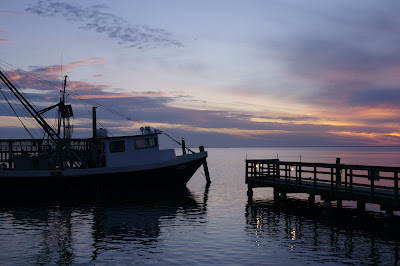One of the amazing things about digital is the vast array of tools that are available to the photographer for processing the shot. Indeed, the amount of hardware and software packages available is astounding. You can get a Chromira processor for a price that runs well into 5 digits, a scanner dedicated to film (thus creating digital pictures from film), full featured software such as Adobe Photoshop, or even small programs like Apple iPhoto. All these things help someone take the picture from the camera and do amazing things with the picture.
Most of my photos would not be possible without the tools in my digital toolbox. All my film photographs are scanned directly from the negatives rather than prints. I use an image editor to clean the dust from the scan (sometimes dust is inevitable and DigitalICE takes too long). Then I use Aperture to correct and exposure issues, etc. with the image. Some say this is cheating, but most things that can be done in Aperture can be done in the darkroom as well. I try as much as possible to take the picture correctly the first time, but there are times when the output can be improved upon. Even the great Ansel Adams used darkroom tricks to improve his prints. I’m sure that if he had lived to see what can be done with a computer, there would be digital tools in his arsenal.
Now that I have a little more time, I am starting to explore some more the digital tools out there. I use Aperture for much of my processing work. Up until now there weren’t that many plug-ins available for Aperture. Since the release of 2.0, however, the plug-ins have started to trickle in. This evening I downloaded trial versions for 2 of the plug-ins available and decided to see what I could do. Here is an image that I played with earlier:
This is the original picture exported directly from the RAW file. For those not from Texas, this is the Texas Bluebonnet, a flower native to Texas that draws out the photographers from every hiding place in the state each spring. When I took this photo, I accidentally left my camera in ISO1600, which gave me a lot of noise. Also, the colors seemed a little washed out to me. Since my focus was on the flower and not the field around it, I cropped the picture and fired up AKVIS Noise Buster and got this result:
This is now a more noise-free photo. I left the out-of-focus flower in the picture to keep the original subject from being too centered and to let the viewer know that this was taken in a field of bluebonnets and not in a garden or a flower pot. I discovered AKVIS a while ago and have used it much since it’s purchase. In fact, most of my concert photos go through AKVIS. The colors were still a little washed to me, so I imported the new noise-free image to Aperture to tweak the colors and ended up with this result:
To me now the blue in the flowers really pops out against the green of the grass. The only trouble is now the flower in the background stands out a little more. I suppose I could have cropped the photo closer to the subject, but I just didn’t want a totally frame-filling subject. This picture is what would eventually end up in my flickr photostream. Some people seem to like it.
So I was reading through some groups and found that there were plug-ins available for Aperture. So I went and downloaded DFT Ozone and Tiffen Dfx. DFT Ozone allows for selective color changes while Tiffen Dfx is a filter plug-in. I took this image to see what I could do with it in both the plug-ins and this is my result:
Now I have a centered portrait of a Texas Redbonnet (doesn’t exist for those non-Texans out there). DFT Ozone was used to change the color of the petals while I used Tiffen Dfx to add the vignetting. The final edit was the crop in Aperture to tighten the image. There is still a trace of the other flower, which still gives the impression that the picture was taken in a field. I wish I had saved a copy of the image between plug-ins, but before that I hadn’t even planned this blog entry.
I know that I’m not even scratching the surface when it comes to digital tools available. I found an Aperture plug-in earlier that will allow one to isolate the area of the image to be edited. That one will be downloaded a little later. I know that many will say that Photoshop offers some of these things as standard, but there are drawbacks to Photoshop (cost, learning curve, etc.) that drive users to seek other solutions.
As always, comments are welcome and encouraged.


















